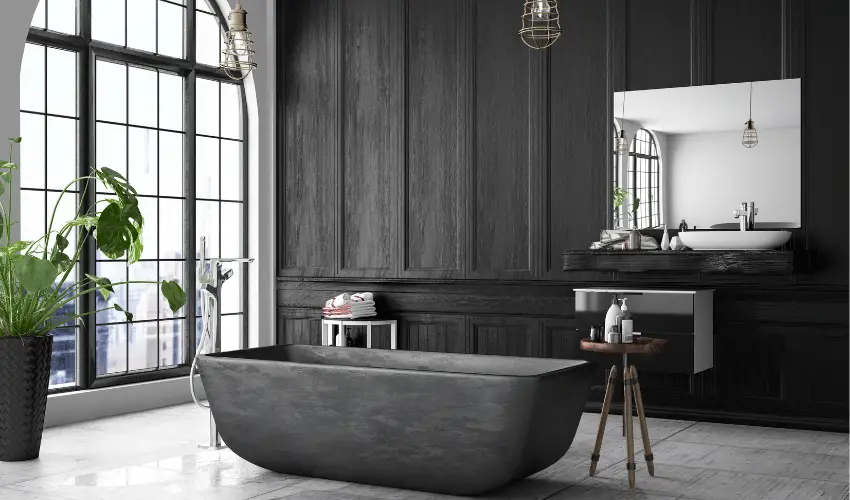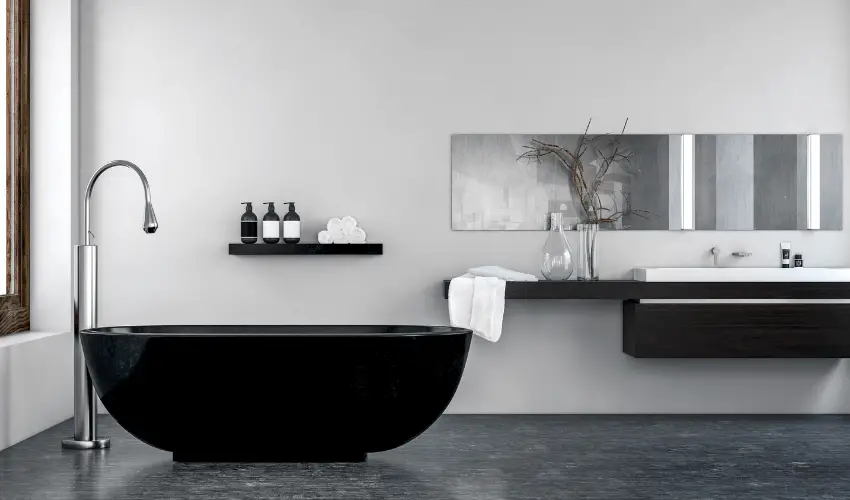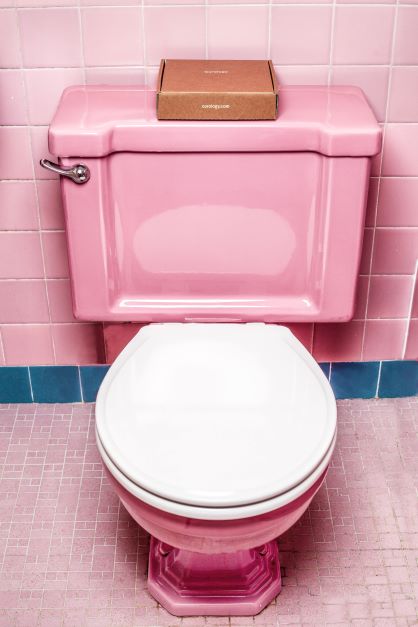Designing or remodeling a bathroom requires careful planning to ensure both functionality and aesthetic appeal. From optimizing space utilization to selecting the right fixtures and materials, every decision contributes to the overall success of the project. Explore our bathroom layout tips and get inspired by beautiful design ideas to help you create your dream bathroom.
Table of Contents
The Dos of Bathroom Layout and Design

Designing a bathroom involves more than just picking beautiful tiles or trendy faucets—it’s about creating a space that’s practical, comfortable, and visually appealing. Whether you’re remodeling or starting from scratch, following the right design principles can make all the difference.
Here are the essential “Dos” of bathroom layout and design to ensure your project is a success:
Do Prioritize Function Over Fashion
While aesthetics are important, function should always come first. Choose a layout that supports daily routines—ample room around the toilet, sink, and shower is more valuable than trendy accessories you won’t use.
- Plan for sufficient clearance space.
- Make sure doors and drawers can open without obstruction.
- Avoid placing the toilet in the first line of sight.
Do Maximize Natural Light

Natural light can make any bathroom feel bigger, brighter, and more inviting. If possible, include a window or skylight in your design.
- Use frosted or privacy glass for bathroom windows.
- Consider solar tubes for small bathrooms with no exterior walls.
Do Include Effective Ventilation
Moisture buildup leads to mold and mildew, so a good ventilation system is critical. Install a powerful exhaust fan and consider a window for passive airflow.
- Choose a fan with the correct CFM (cubic feet per minute) rating for your room size.
- Run the fan for 15–20 minutes after each shower.
Do Use Durable, Moisture-Resistant Materials
Bathrooms are wet environments, so use materials that can handle humidity and water exposure.
- Choose porcelain or ceramic tile for floors and walls.
- Choose water-resistant paint (like semi-gloss or satin finishes).
- Use high-quality silicone sealant around sinks and tubs.
Do Plan for Adequate Storage
Even the most beautiful bathroom can feel messy without enough storage. Plan built-in or hidden storage to reduce clutter.
- Use vanities with drawers and organizers.
- Install floating shelves or recessed wall niches.
- Don’t forget over-the-toilet storage for tight spaces.
Do Choose the Right Layout for the Space
Layout efficiency is key to a functional bathroom. Match the layout style—galley, L-shaped, U-shaped, or open-concept—to the room size and usage.
- Keep plumbing fixtures close together to reduce costs.
- Separate the “wet” and “dry” zones when possible.
Do Stick to a Cohesive Style

Keep colors, materials, and finishes consistent to create a polished look. A mix of too many trends can make the space feel chaotic.
- Choose a color palette with 2–3 complementary tones.
- Coordinate metal finishes (e.g., all brushed nickel or matte black).
Do Incorporate Layers of Lighting
Bathrooms need more than overhead lights. Add task lighting for the vanity, ambient lighting for overall illumination, and accent lighting for mood.
- Use LED sconces at eye level on both sides of the mirror.
- Consider dimmer switches to control light intensity.
Do Make Space Feel Bigger
Smart design tricks can visually expand a small bathroom.
- Use large mirrors to reflect light and add depth.
- Install frameless or clear glass shower enclosures.
- Stick to light colors and minimal patterns on walls and floors.
Do Plan for Long-Term Use
Design with future needs in mind, especially if this is your forever home.
- Install grab bar reinforcements inside shower walls.
- Choose comfort-height toilets and wide entryways.
- Go for curbless showers for easier accessibility.
The Don’ts of Bathroom Layout and Design
While creating your dream bathroom, it’s easy to get carried away with design ideas and trends. But some decisions—if not carefully thought through—can lead to daily frustrations, wasted space, or expensive mistakes.
Here are the top “Don’ts” of bathroom layout and design to keep your space both functional and stylish:
Don’t Ignore the Flow of the Space
Poor layout can make even a beautiful bathroom feel cramped or awkward. Always consider how people will move through the room.
- Avoid placing fixtures in front of doors or windows.
- Don’t crowd the space around sinks, toilets, and showers.
- Make sure cabinet and shower doors have room to fully open.
Don’t Skip Ventilation
Skipping proper ventilation is one of the most damaging bathroom design mistakes. Without it, mold, mildew, and peeling paint are almost guaranteed.
- Don’t rely on just a window—install an exhaust fan.
- Avoid placing the fan too far from the shower or tub.
Don’t Overload with Fixtures
Trying to squeeze too many elements into a small space will make your bathroom feel cluttered and uncomfortable.
- Avoid adding a separate tub and shower if space doesn’t allow.
- Don’t install oversized vanities in compact bathrooms.
Don’t Use Materials Unsuitable for Moisture
Not all materials can withstand humidity. Choosing the wrong ones may lead to warping, staining, or mold growth.
- Avoid wood floors or wallpaper unless they’re specifically designed for bathrooms.
- Don’t use regular drywall in wet zones—use cement board or water-resistant drywall.
Don’t Overlook Storage Needs
A bathroom without proper storage quickly becomes disorganized. Relying on just a sink cabinet won’t cut it for most households.
- Don’t forget storage for toiletries, towels, and cleaning supplies.
- Avoid open shelving only, especially if you prefer a tidy, minimalist look.
Don’t Make the Toilet the Focal Point

When you open the bathroom door, the toilet shouldn’t be the first thing you see.
- Avoid placing the toilet directly in the line of sight.
- Use partial walls, vanities, or storage to provide subtle separation.
Don’t Ignore Lighting Layers
One ceiling light isn’t enough for a functional and comfortable bathroom.
- Don’t rely on overhead lighting alone—add task lighting around mirrors.
- Avoid overly dim lighting, which makes grooming difficult.
Don’t Sacrifice Function for Style
Trendy tiles or unusual layouts might look great in photos, but not every design works for real life.
- Don’t choose style over comfort—sharp corners or impractical fixtures can be daily annoyances.
- Avoid furniture and décor that aren’t moisture-resistant.
Don’t Forget About Privacy
Bathrooms should feel safe and private. Overexposed windows or clear glass doors without thought to placement can feel uncomfortable.
- Avoid using clear glass for windows without privacy film or shades.
- Don’t place windows where neighbors can see inside.
Don’t Underestimate Future Needs
Designing only for now may lead to regrets later, especially in a family or forever home.
- Don’t ignore accessibility or aging-in-place features.
- Avoid permanent elements that are hard to change, like non-standard plumbing layouts.
Bathroom Layout 101: How to Design Your Dream Bathroom

Designing your dream bathroom may seem overwhelming at first—but with the right planning, it can be both exciting and rewarding. In this guide, we’ll walk you through everything you need to consider, from essential fixtures and layout dimensions to zoning, storage, and finishes.
You’ll learn how to place the key elements—like the sink, toilet, shower, and tub—for optimal flow and comfort. We’ll also explore smart storage solutions, privacy tips, and how to separate wet and dry zones effectively. Whether you’re working with a small en suite or a large master bath, we’ll guide you step by step.
Let’s dive in.
Key Considerations for Bathroom Design
What to Include
Start by identifying what you truly need. Do you want a bathtub, or is a shower more practical? A walk-in shower saves about 40% more space than a bathtub. Think about whether you need a single or double vanity, and consider space-saving options like a handheld bidet or a compact toilet if space is tight.
Fixture Sizing
Choosing smaller or slimmer fixtures can open up your floor plan. For example:
- Standard vanity depth: 20 inches (50 cm)
- Compact vanity option: 12 inches (30 cm)
Smaller options create more floor space without sacrificing style or function.
Wet and Dry Zoning

A well-zoned bathroom separates the wet area (shower or bath) from the dry area (vanity, toilet). This not only prevents water damage but makes daily routines more comfortable. Wet zones need proper waterproofing, while dry areas should offer space to towel off and dress.
Movement and Flow
Ensure clear movement between areas without obstruction. Consider installing a sliding or pocket door to avoid clunky swing doors that take up space or block access.
Logical Fixture Positioning
Think practically:
- Mirror above the vanity
- Towel rails within arm’s reach of the shower
- Bidet or sprayer placed next to the toilet
These placements enhance usability and flow.
Toilet Style
Choose a wall-mounted toilet with a concealed cistern. It saves floor space and makes cleaning easier while giving a modern look.
Privacy First
Plan for privacy:
- Use frosted glass on doors or windows
- Avoid placing the toilet directly in the line of sight when opening the door
- Consider noise reduction features like door sweeps or wall insulation
Smart Storage Solutions

Clutter quickly ruins even the best design. Use:
- Built-in shelves
- Wall-mounted soap dispensers
- Over-the-toilet cabinets
- Floating vanities with drawer organizers
Standard Bathroom Fixture Dimensions
Here are some common dimensions to help you plan your layout:
Fixture | Minimum Dimensions |
|---|---|
Bathtub | 30″ x 60″ (76 x 152 cm); short tubs at 54″ (137 cm) |
Shower | Min. 30″ x 30″ (76 x 76 cm); comfortable size: 42″ x 42″ (106 x 106 cm) |
Toilet | Min. 30″ x 30″ (76 x 76 cm); accessibility: 36″ (92 cm) wide |
Vanity | Single: 24″ wide (61 cm); Double: 60″ wide (152 cm) |
Always check manufacturer specifications to ensure accuracy.
Designing for Accessibility
If you’re planning for aging-in-place or have family members with mobility needs, consider:
- Grab bars near the toilet and shower
- Slip-resistant flooring
- Elevated toilets
- Walk-in or roll-in showers
- Shower seating
- Sliding doors for easier access
These additions improve safety without compromising on style.
Frequently Asked Questions
What is the ideal layout for a small bathroom?
For small bathrooms, the best layout prioritizes efficiency and flow. Go for space-saving fixtures like wall-mounted toilets and compact vanities. Consider a walk-in shower instead of a bathtub, and place fixtures along one wall to reduce plumbing complexity. Use sliding or pocket doors to save swing space. Keeping wet and dry zones clearly separated will also help the room feel more open and organized.
How much space should I leave between bathroom fixtures?
Here are some general spacing guidelines to follow:
Toilet to wall or other fixture: At least 15 inches (38 cm) from centerline to side
Front clearance for toilet and sink: Minimum 21 inches (53 cm), but 30 inches (76 cm) is more comfortable
Between double sinks: At least 36 inches (91 cm) center-to-center
Maintaining proper clearance ensures safety, comfort, and accessibility.
How do I separate wet and dry zones in a bathroom?
Wet zones include areas that get direct water exposure—like the shower, bathtub, or wet room. Dry zones are for dressing, storage, or using the toilet and vanity. You can separate these zones using:
Glass shower screens or enclosures
Raised curbs or thresholds
Waterproof flooring and walls in wet areas
Strategic layout, placing the wet zone at the far end of the room and the dry zone near the entrance
What type of flooring is best for bathroom design?
The best bathroom flooring is water-resistant, durable, and slip-resistant. Top choices include:
Porcelain or ceramic tile – Classic, water-resistant, and stylish
Vinyl flooring – Budget-friendly, easy to install, and waterproof
Natural stone – Elegant and durable but requires sealing
Engineered wood or waterproof laminate – Offers warmth and a wood look with water resistance
Avoid carpet or untreated wood, as they can absorb moisture and lead to mold or warping.
What are some common mistakes to avoid in bathroom layout design?
Avoid these common pitfalls:
Overcrowding the space with too many fixtures
Poor door placement, which can block movement or access
Inadequate storage, leading to clutter
Improper fixture positioning, such as placing towel bars too far from the shower
Neglecting ventilation, which can lead to moisture problems
Careful planning and attention to detail will help you create a beautiful and functional bathroom.
Conclusion
The perfect bathroom is a blend of form and function. By planning carefully, focusing on layout efficiency, and designing with your lifestyle in mind, you can create a space that feels luxurious, practical, and timeless. Whether you’re working with a small powder room or a large master bath, these tips will help you achieve the best results possible.